In today’s fast-paced world, finding space is hard. A vertical garden planter is a great solution. It lets you have a green space without using up floor space. DIY gardening is getting popular, and making your own living wall is a fun trend.
Not only does a vertical garden look good, but it also gives you fresh herbs, veggies, and flowers. You can get them right when you need them.
Starting your green wall journey is easy. With a few materials and 5 simple steps, you can make your own vertical planter. It’s a fun project that’s also good for the planet. This guide will help you turn your space into a lively oasis, perfect for city garden lovers.
Table of Contents
Introduction to Vertical Gardening
Vertical gardening turns small spaces into lush gardens. It started around 3000 BCE with grapevines in the Mediterranean. Now, it’s popular in cities and small backyards.
This method uses walls and fences to grow plants. It’s perfect for urban and indoor gardens. Even small lake houses can benefit.
By using walls, you can make your space look better and help the planet. Plants like herbs and climbers add beauty. They also get better air, which helps them grow.
Biophilic design brings nature into homes. Vertical gardens solve space and greenery needs. You can make your own using crates or planters that match your style.
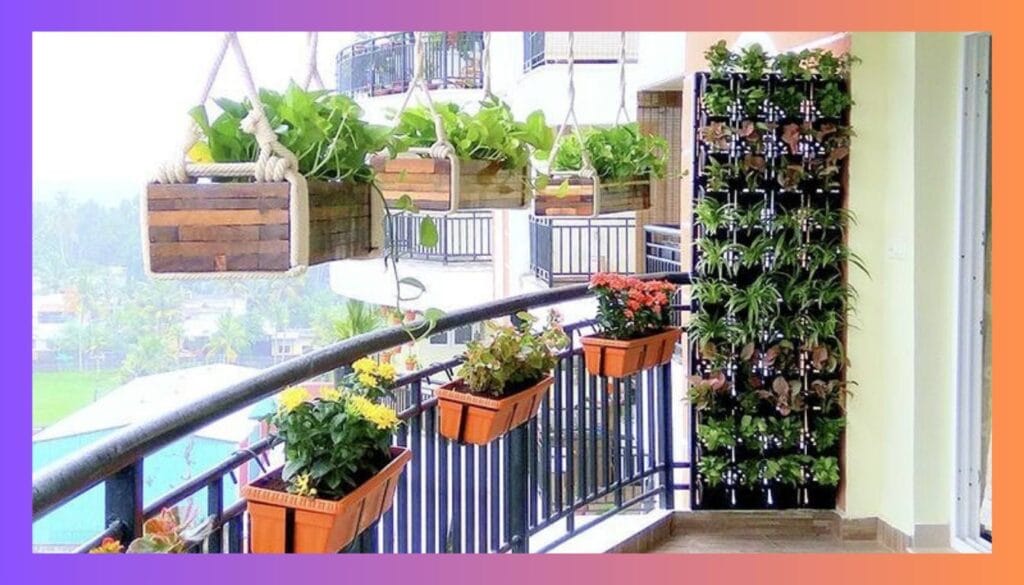
Vertical gardens can be simple or big. They can cover ugly walls with greenery. They also make your space feel deeper and more interesting.
They’re great for making your home calm or improving air quality. Vertical gardening is a smart way to use space in any setting.
Benefits of a Vertical Garden Planter
Vertical garden planters offer many benefits for gardening. They are great for urban areas where space is limited. You can grow fresh herbs and vegetables right where you need them.
These gardens also improve air quality and cut down on carbon emissions. They make plain walls or fences look alive with green. Plants grow better because they get more sun and air, avoiding fungal problems.
Keeping a vertical garden is easier. It reduces weeds, pests, and diseases. With less soil, there’s less chance of soilborne diseases, making crops cleaner and prettier. You can even use spaces like balconies or walls for planting.
Vertical gardening also cools buildings and lowers noise levels. It saves energy and boosts biodiversity. You’ll have more space, easier cleaning, and better produce with less damage.
Choosing the Right Location for Your Vertical Garden Planter
Finding the perfect spot for your vertical garden is key to its success. First, think about how much sunlight your plants need. Most plants do best in spots that get at least six hours of direct sunlight a day. A south-facing wall is great for getting lots of light.
But, if your area gets a lot of shade, it might not be the best. You could place your garden in kitchens or on balconies. These spots get bright, indirect light, which is good for plants and doesn’t get in the way.
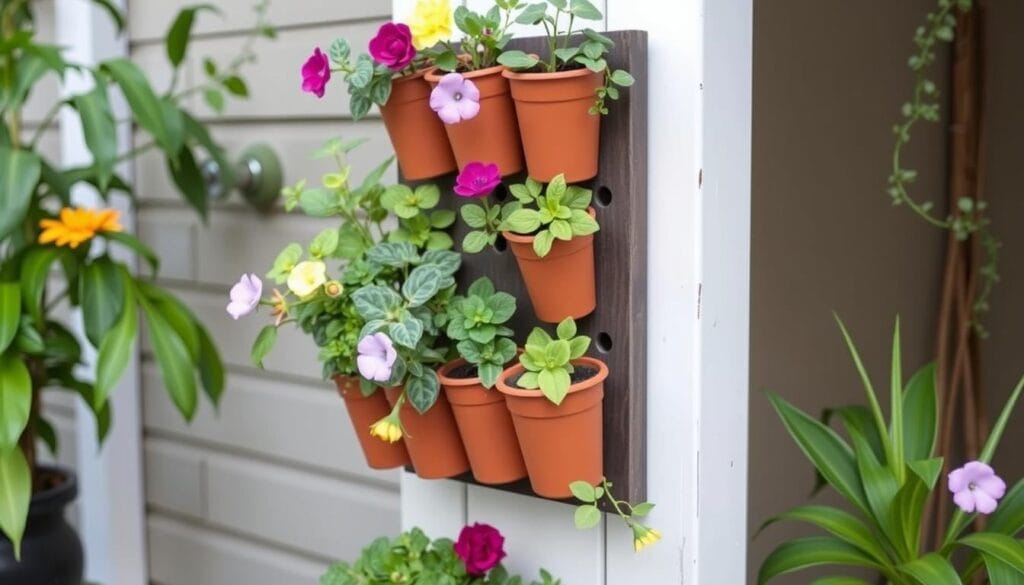
It’s also important to have easy access to water. Make sure your garden is close to a water source. A drip irrigation system can help with watering, especially in vertical gardens that need more water.
Good airflow is also crucial. It helps prevent mold and keeps your plants healthy. Make sure your garden gets enough air to grow well.
Temperature changes can hurt your plants. Choose a spot with a steady temperature. Also, protect your garden from extreme weather. By following these tips, you can create a great space for your plants to thrive.
Essential Materials for Building Your Vertical Garden Planter
Building a vertical garden planter needs the right materials. You want something that looks good and works well. Knowing your options helps you make a space where plants can thrive.
Wood Options and Alternatives
There are many wood types for your vertical garden:
- Treated lumber is durable and fights off rot, making it a top pick.
- Cedar is great because it naturally keeps pests and decay away.
- Metal planters offer a modern look and last a long time.
- Using pallet wood or recycled items like Crocs is a creative way to plant small plants.
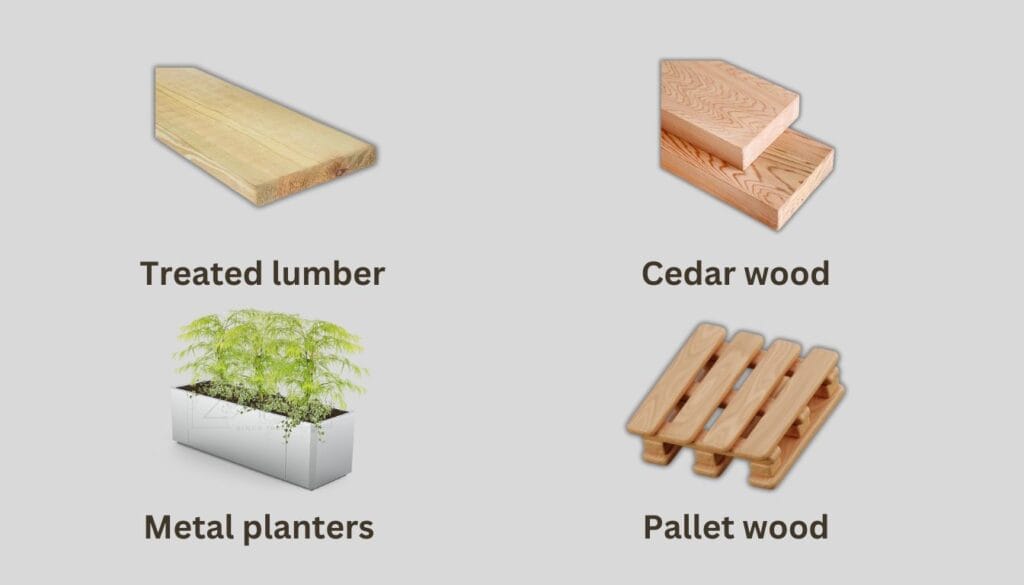
Each wood type has its own perks. They can match your design and meet the needs of a vertical garden.
Soil Types for Vertical Planters
Choosing the right soil is essential for the well-being of your vertical garden. You need potting soil that holds moisture but also drains well. A good mix is:
- 1/3 compost
- 1/3 vermiculite
- 1/3 peat moss
Other mixes might include coconut coir with Acti-Sol Hen Manure Fertilizer. Or Sunshine Mix 1 with the same fertilizer for more nutrients. For hydroponic planters, make sure the medium lets air in and drains well. The right soil and watering will help your plants grow.
Design Ideas for Your Vertical Garden Planter
Designing your vertical garden planter is a chance to get creative. You can pick from many ideas to make a beautiful green space that fits your style. Adding hydroponic features helps your garden grow well and look good too.
Different Styles of Vertical Garden Planters
There are many styles of vertical garden planters to choose from. Here are a few:
- Tiered Planters: These create a cascading look, great for small plants and flowers.
- Pocket Gardens: Wall-mounted pockets are perfect for showing off lightweight plants.
- Wall-Mounted Systems: These are stable and can hold different types of plants.
- Living Walls: These integrate into your home’s design, improving looks and air quality.
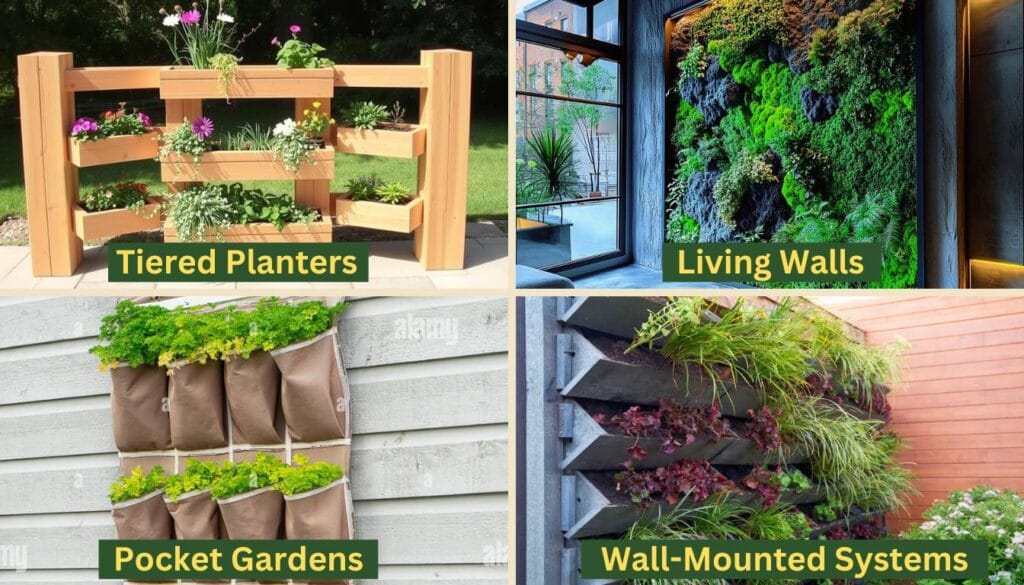
These DIY styles save space and make your garden look better. You can pick and mix to fit your space and taste.
Incorporating Hydroponic Features
Hydroponic features are great for water-saving, soil-less gardening. Think about these when adding them:
- Water Circulation Systems: They make sure plants get enough water without wasting it.
- Nutrition Delivery: Hydroponics let you control what nutrients plants get, keeping them healthy.
- Space Optimization: You can use more vertical space since you don’t need soil.
Adding hydroponic features lets you grow many types of plants. From vines to grasses, it’s perfect for small spaces. It’s great for those who want to use their space well.
Step-by-Step Guide to Building Your Vertical Garden Planter
This guide will help you make your own vertical garden planter. First, get the tools and materials you need. This makes building easier and helps your plants grow well.
Gather Your Tools
Before starting, make sure you have these tools:
- String line
- Wheelbarrow
- Auger or shovel
- Circular saw
- 3′ – 6′ level
- Drill and ½” × 10″ drill bit
- Garden gloves
- Trowel
- Hand tools
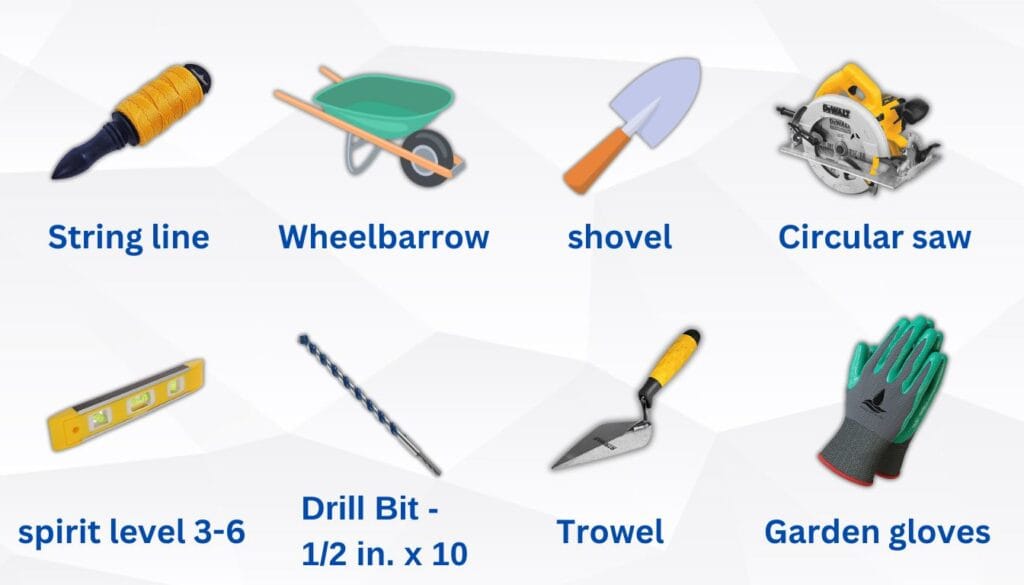
Construction Process
Begin by preparing your work area. Clean it well to help things stick together. Here are the key steps:
- Put together two 6″ × 6″ metal post bases for support.
- Install two 2″ × 6″ × 12′ cedar boards as the base.
- Place four 2″ × 4″ × 10′ cedar boards for vertical support.
- Put in two 6″ × 6″ × 8′ cedar pressure-treated boards as vertical posts.
- Use four 4½” × 10″ lag bolts to make the frame strong.
- Mix sixteen 50-lb bags of concrete and fill the post bases for stability.
Make sure everything is level and aligned. Use VELCRO® Brand ALFA-LOK® Fasteners to hold the wainscoting panel and planters in place.
Adding Planters and Soil
After building, it’s time to add the planting stuff:
- Put three 5-pocket fabric garden pockets on the panel.
- Secure them with 12 fasteners.
- Fill with four 2-cubic-foot bags of potting soil for nutrients.
- Plant fifteen 1-gallon plants in the pockets.
- Think about adding ¼” spaghetti drip tubing for watering.
Your vertical garden planter is now ready! Make sure it gets at least six hours of sunlight a day. Keep the soil moist and prune plants as needed to help them grow.
Types of Plants Perfect for Indoor Vertical Gardening
Vertical gardening is a great way to use space and make your home look better. When picking plants for vertical gardening, go for ones that do well in tight spots. Herbs and greens not only look good but also give you fresh food right at home.
Indoor herbs are top choices for your vertical garden. Herbs like basil, mint, and parsley need little care and can make your food taste better. They’re small, so they fit well in tiny planters, perfect for your edible wall garden.
Leafy greens are also great picks. You can grow radishes, leaf lettuce, and spinach. They need pots that are 6 to 9 inches deep, which works well for vertical gardens. For more, try kale and peppers in pots that are 12 to 18 inches deep.
- Vining cucumbers and cherry tomatoes do well with trellises or supports, making them perfect for vertical gardens.
- Pole beans and Malabar spinach also do great in vertical gardens, giving you lots of harvest in small spaces.
- Annual flowering vines like black-eyed Susan vine and morning glory add color and beauty to any garden.
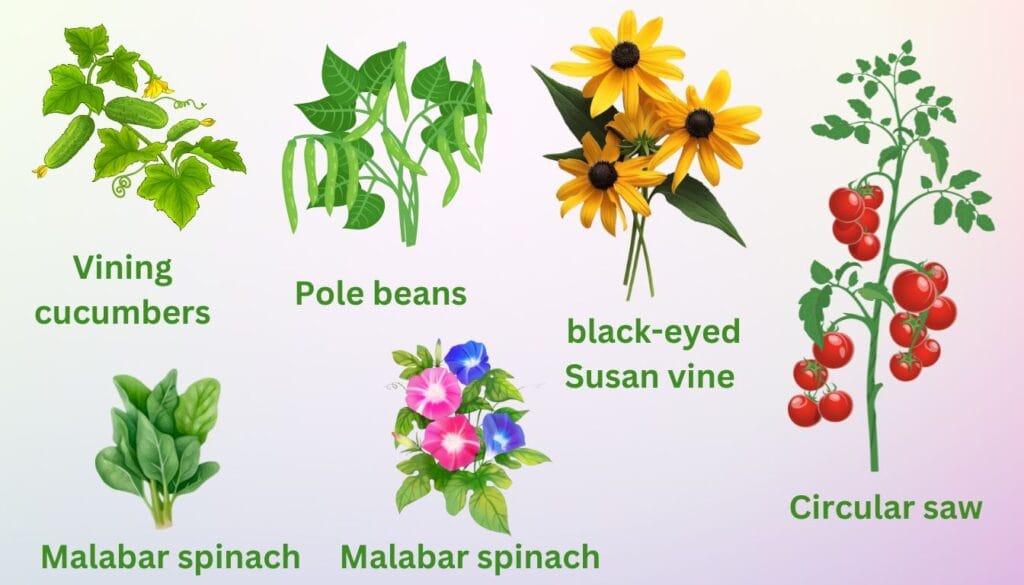
Adding different plants can make your garden look even better. Ferns and golden pothos do well in different light, making them great for indoor gardens. Mixing these plants for vertical gardening creates a lush, welcoming space that’s both beautiful and productive.
Pick your plants carefully and try out different layouts. This way, you’ll have a thriving and beautiful indoor vertical garden.
Maintenance Tips for Your Vertical Garden Planter
Keeping your vertical garden planter healthy is key. It needs the right watering, care for plants, and pest control. These steps are special for vertical gardens.
Watering and Fertilizing
Watering your vertical garden right is important. Water less often but deeper to help plants grow better. A drip irrigation system is a good choice. It keeps the soil moist without causing root rot.
Always water at the base of each plant. This helps stop weeds from growing.
- Use organic fertilizers like compost tea and kelp-based ones. They feed your plants well without harming the soil.
- Feed your plants regularly during the growing season. This helps them grow well.
- Make sure the soil drains well. Standing water can kill your plants.
- If your garden is indoors and doesn’t get enough light, add extra light. It helps plants grow.
Pruning and Pest Control
Pruning is crucial for your plants’ shape and size. It also helps air move, stopping diseases. If a plant gets sick, throw it away by burning it. This stops the sickness from spreading.
Watch out for pests. They can be hard to deal with in vertical gardens.
- Go for natural pest control instead of chemicals. Options like neem oil and diatomaceous earth are safer.
- Check your plants often. This helps you catch pest problems early.
- Harvest your plants often. This keeps them healthy and productive.
Creating a Living Wall for Small Spaces
A living wall turns any bare wall into a lush green space. It’s a great way to add plants without taking up floor space. Building a DIY living wall frame costs about $250 and takes just two days.
Think about using wall-mounted planters and stacked systems for your living wall. You can use pressure-treated pine or lattice panels for the frame. Galvanized steel planters are durable and can be secured with deck screws. This setup boosts your greenery and home’s look.
Picking the right plants is crucial for a thriving vertical garden. Trailing plants create stunning cascades, while compact perennials keep foliage consistent. Add flowering plants for color and herbs like basil or thyme for both looks and use. Make sure plants fit your wall’s light and watering needs.
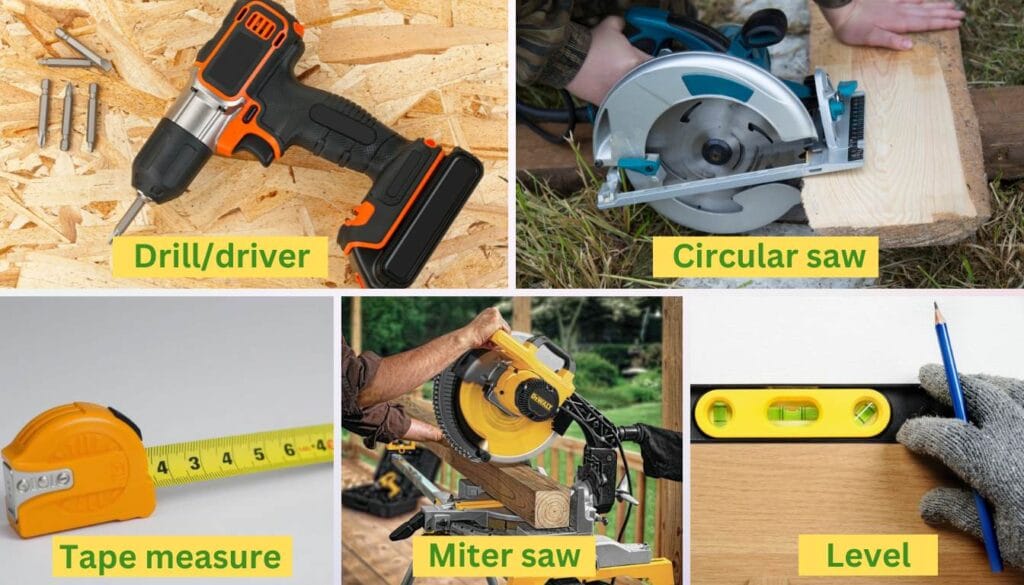
- Tools you will need to complete your project include:
- Circular saw
- Drill/driver
- Level
- Tape measure
- Miter saw
- Think about adding irrigation systems. Simple hand-watering works, but self-watering systems are easier for a healthy garden.
Keeping your vertical garden healthy is important. It needs regular care, like replanting to stay vibrant. Small space gardening is rewarding, and a living wall brings beauty to your home.
Conclusion
Vertical gardening brings many benefits to your living space, turning it into a lively green area. Using vertical garden planters, you can grow fruits, vegetables, and herbs even in small spaces. This not only makes your home look better but also helps the environment by supporting local food and reducing carbon emissions.
When you make your own planters, remember to express yourself. You can grow everything from colorful herbs like basil and mint to heavy-yielding veggies like tomatoes and cucumbers. Growing these plants brings joy and helps you live healthier while also protecting the planet.
To keep your vertical garden looking great, remember to water it regularly and use companion planting wisely. Start your vertical gardening journey and see how it can transform your space and your life.
FAQS
What is a vertical garden planter?
A vertical garden planter lets you grow plants up, saving space. It’s great for small areas, like city homes. You can use wall planters, freestanding setups, or hydroponics.
How do I choose the right location for my vertical garden planter?
Pick a spot with lots of sunlight, water, and visibility. Kitchens, balconies, or sunny walls are best. They need good airflow and stable temperatures.
How often should I water my vertical garden planter?
Watering depends on the plants, weather, and sun. Make sure it drains well to avoid soggy soil. Check moisture often to keep plants healthy.
Can I create a vertical garden in a small space?
Yes! Vertical gardens are perfect for small areas, like apartments or tiny yards. Use wall planters and stack systems to save space.
How do I maintain my vertical garden planter?
Keep it up with regular watering, fertilizing, and pruning. Watch for pests and manage growth to keep your garden healthy.

